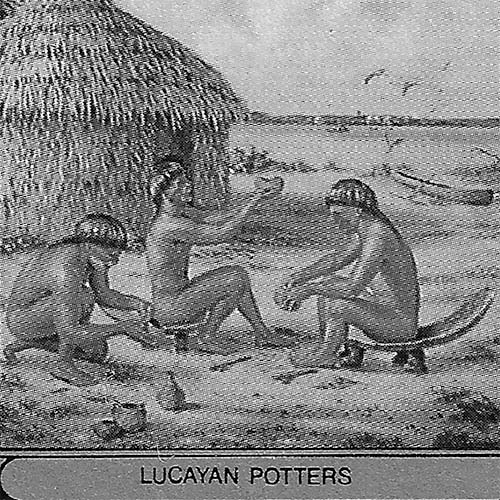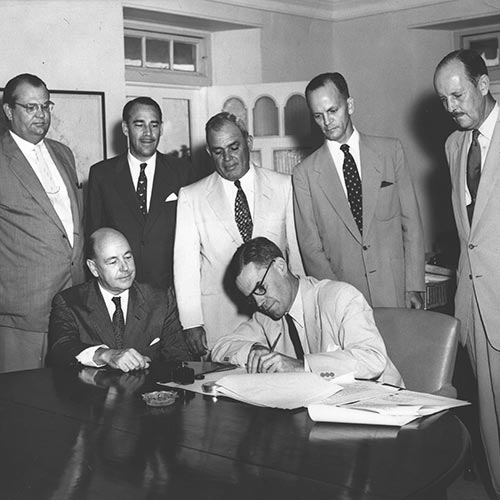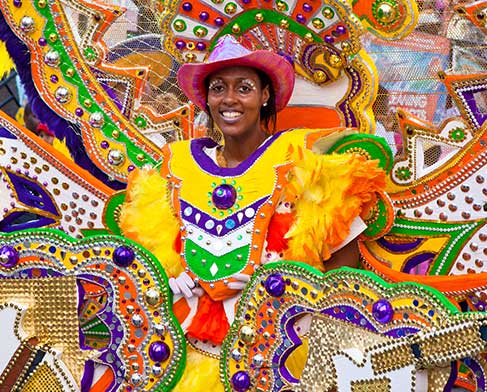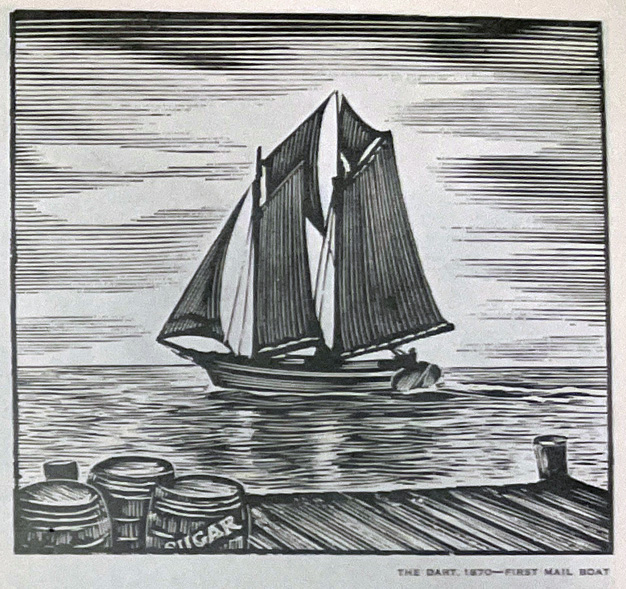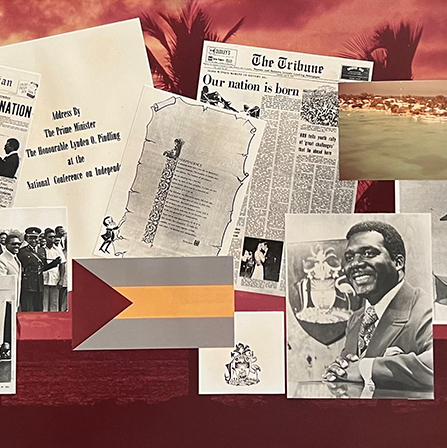History
Growing Freeport - A Port City Blossoms
New Industries
The first successful Freeport industry was Freeport Bunkering, an off-shore fueling station for ships built with a $1 million loan from Gulf Oil opened in 1959. The installation, which could fuel two ships at a time, was fed by two underwater pipelines 3,000 feet long that connected to a pair of pumping stations located on barges.
Although business was slow at first, a change in the US laws in March 1960 instituting a quota on fuel imports suddenly made the bunkering and fueling operation particularly attractive to major oil companies and ship owners alike. Said Peter Barratt; “The result was dramatic. In one month in December 1961 the terminal 922,000 barrels of duty-free oil mainly to United States coastal shipping … For a time there was frantic activity when ships would be waiting for their turn to take on fuel at the two off-shore moorings …”
A less successful initiative was the Bahama Cement Company, a wholly-owned subsidiary of US Steel, that also undertook to dredge the harbor to 42 feet; deeper than New York harbor. The potential for the manufacture of cement (limestone being one of Grand Bahamas’ few resources) had been thoroughly investigated in the Cornell study, which conclude it was a good prospect despite the need to import argillaceous clay and gypsum, as well as coal to fuel the plant. However, even though Bahama Cement was given a 12-year monopoly in the colony in 1961, it failed to prosper.
Residential Efforts
Initial efforts before 1960 to build a residential district resulted in a grocery, a post office, administration and telecommunication offices. There was a new school where Haitian children were taught English as a second language with a kindergarten opened by Georgette Groves. “Marco City” consisted of 29 pre-fabricated single-family residences erected by the Marine Construction Company (hence the name) in what would become Freeport’s downtown area.
City Services
A branch of Barclay’s Bank opened in a small wooden building near the harbor before moving to a more permanent building in the downtown area. Steam generators provided electrical power and hand pumps were used to supply water until the Port Authority was able to install more efficient modern utilities.
In 1959, there were 59 entries in the mimeographed directory of the newly-installed telephone system. In March 1960, the first issue of the Freeport News (also mimeographed) was distributed. There were about 70 licensed businesses in the district, including a modern supermarket, a clothing and dry-goods store, a pharmacy, beauty salon, dental clinic, and a liquor store. A volunteer fire department was established, and a fire truck was imported that summer.
Architect Alfred Browning Parker
Freeport's first motel and restaurant was the Caravel Club, designed by the famous Florida architect Alfred Browning Parker, which opened with eight units on December 31, 1958. Seventeen more units and a lounge were added the following year.
Parker also designed the airport terminal, the school, a downtown administrative building, Barclays Bank, and three luxurious homes on Lucaya Beach for the Groves, Hayward and Diamond families. Barney Diamond was owner of the Marine Construction Company.
New Philanthropy
Father Brendon Forsyth, the Catholic chancellor of the Nassau Diocese, supported construction of a new church, Mary Star of the Sea, and the Franciscan convent that the Groves family paid for.
James H. Rand Jr. of the Remington Sperry-Rand Corporation (and inventor of the dial telephone) underwrote the Colonial Research Center, the comprehensive medical and research complex that was the origin of Freeport’s Rand Memorial Hospital, while also providing funding to the Princess Margaret Hospital in Nassau. Rand retired to Freeport in his yacht, the Galaxy, in 1960. In addition to the significant upgrade of the island’s medical facilities, he donated the John Harvard Public Library, which was later re-named the Sir Charles Hayward Library.
